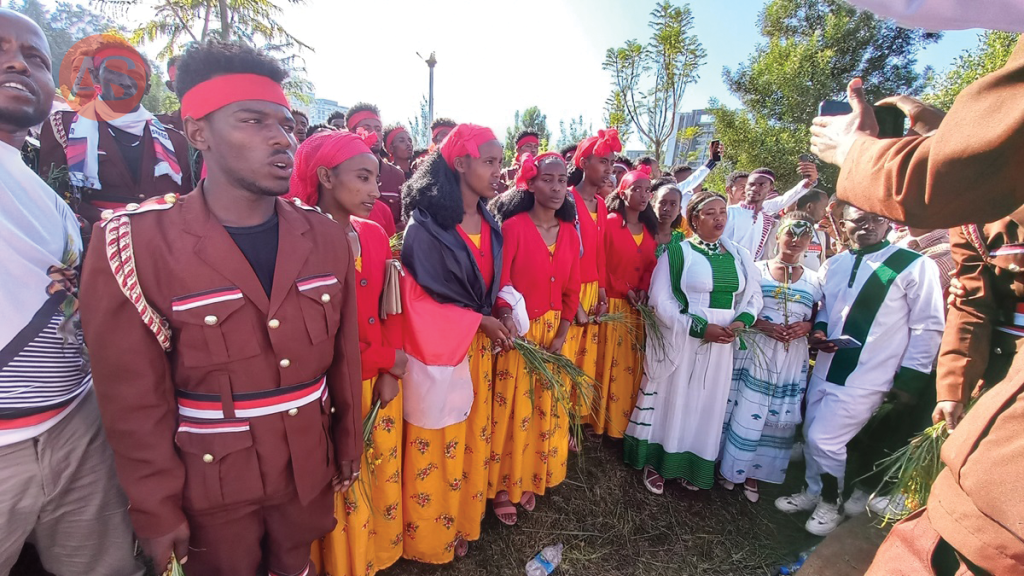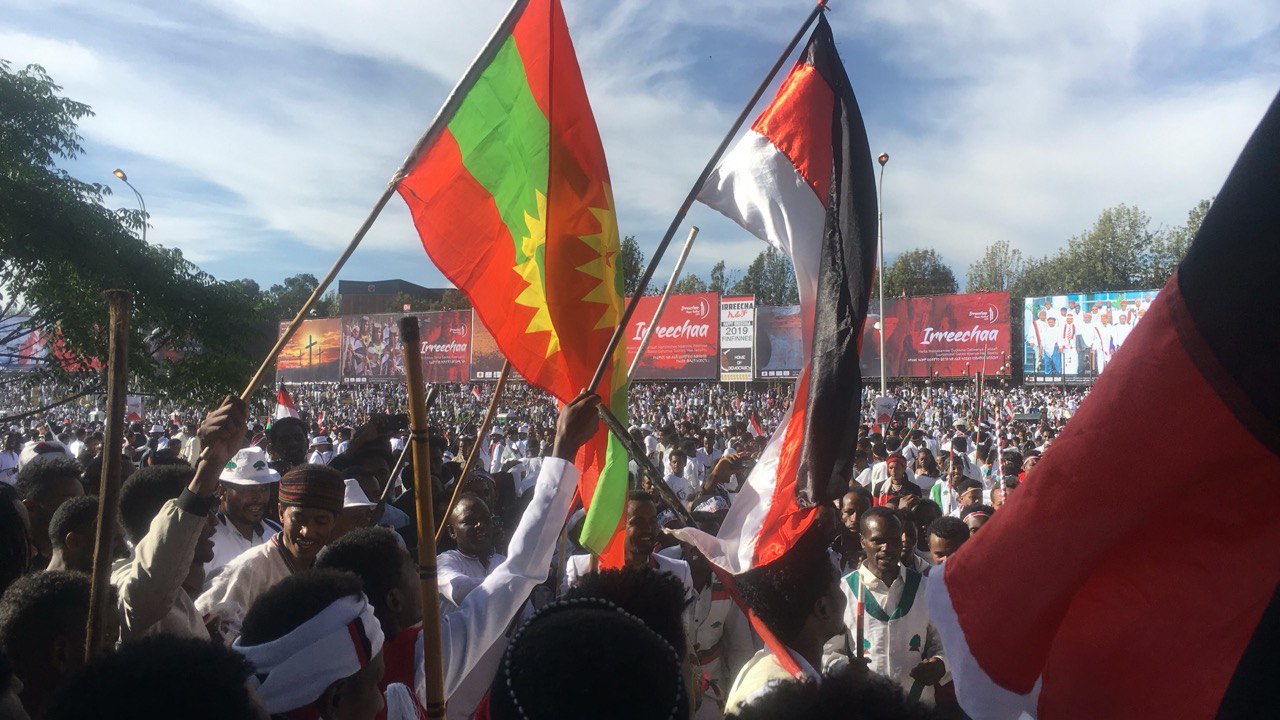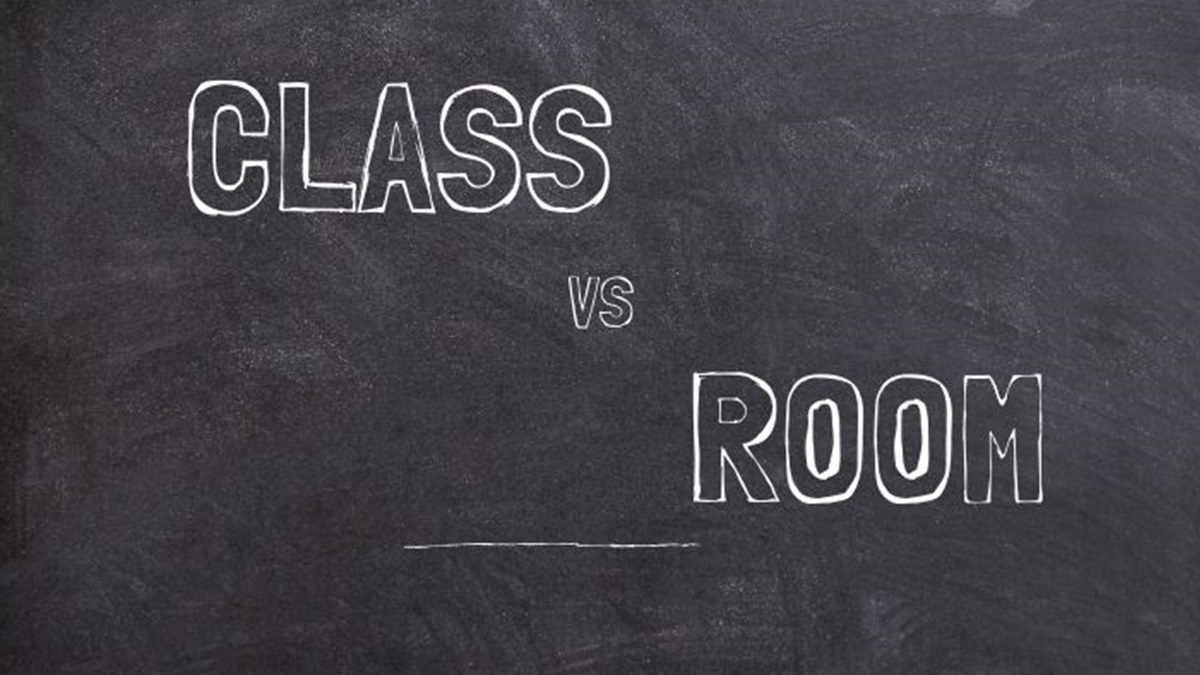
By Asnake Erko1 , Genet Lemessa2, Hinsene Mekuria3, Tullu Liban4, Dhiba Guyo5, Kediro Elemo6, Girma Tadesse7, Nega Wedajo8, Mohammed Mane9 , Girma Gutema10
Background
As part of our move to honor the great celebrations of this upcoming season of Irreecha in Oromia, Ethiopia, this article takes on what Irreecha is and isn’t for those who proudly celebrate it. It would be prudent to inform readers from the very outset here, that the article is a highly condensed and concise compilation of contributions by all the authors, whose distribution from diaspora and back home is almost even.
Moreover, we termed the concept of Qeerroo Generenation in the contemporary Oromoo society as “GenerationZ” in this article, as part of our attempt to sync it with the internationally recognized concept that defines those youth groups as the ones who were born by the end of the last millennium—specifically after the year 1997.
Irreecha: An African Saturnalia
What was historically known as Winter Solstice in the northern hemisphere of planet earth in today’s Europe and much of North American continents is a specific date in a year when the shortest day and the longest night happens. This falls on either December 21 or 22 of every year. Ancient Romans called the day Saturnalia and celebrated it with great festivity in honor of Saturn, which they believed was the god of plant fertility and hence the ensuing agricultural abundance. They celebrated Solstice for farms would turn green and fruitful in the season that followed it. As a result, when those ancient Romans celebrated the occasion, they developed the tradition of decorating their homes with evergreens.
This ancient Roman culture was of course being celebrated long before the advent of Christianity itself. But today, the widely celebrated Christmas holiday adopted most of the markers of Solstice including the green Christmas tree that modern societies put in their homes in the final weeks of the month December every year. In fact, one can say that in one way or another, modern Christmas celebration evolved from this ancient Roman cultural heritage and tradition.
In this article, we argue that Irreecha is an African Saturnalia fast evolving to become an international forum for multiculturalism while honoring and celebrating its roots in the rich culture of the Oromo people and their revered Gadaa system.
Irreecha: The roots and the rituals
Irreecha roots and rituals originated from the Oromo Gadaa system. Gadaa is a complex system constituting socially grounded way of life, politico-military and public administration, overall societal structure anchored on a democratic and egalitarian values in the Oromo society. Though not exactly in same ways, Gadaa is also practiced by multiple societies from the Kushitic stock in the Horn of Africa. Oromo, Sidama, Hadiya in Ethiopia, and the Kikuyu in Kenya have such indigenous cultural heritages and practices.
Gadaa covers graded age sets in the entire life of the male member of the Oromo society from the day of birth until death, while celebrating women rights to the level of reverence. Each age set constitutes a span of eight years that define the productive roles that one should have in the society. As such, someone can remain a productive member of the Oromo society for as many as nine decades or eleven Gadaa age sets (11×8=88], per the world view espoused in the Oromo Gadaa system. Readers interested in further readings about the Oromo Gadaa system are recommended to consider much detailed and scientific accounts presented elsewhere.
Irreecha is one of the rituals the Oromo people practiced for more than 6000 years in the Horn of Africa. The date is counted by the nine cycles of the Gadaa reckoning system whereby each cycle has 360 years. The simple meaning of Irreecha is praying to Waaqaa—The Omnipresent and Omnipotent Universalist God— to get peace and fertility and also thanking Him for what He gave already. Hence, Irreecha is essentially a Thanksgiving day for the Oromo people. Rituals are done by holding green grasses in hands—a symbol of peace, fertility and life—and walking to the river or lake (water being the origin of life in the Oromo world view) and pouring rains and rains of prayers there.
Irreecha: National celebration in Oromia
Irreecha is a great celebration practiced by individuals, local villages as a group and as a nation in Oromia. It is celebrated annually around Hora (lake or other water bodies) at the end of tropical summer—Irreecha Birraa—and praying to Waaqaa on the mountains when that summer is approaching—Irreecha Afraasaa. Summer, the rainy season in the tropical areas, is normally very heavy and dark. It often brings great natural catastrophes like floods and thunderstorms. Oromos go to the mountains and pray for a peaceful rainy season in May. After the subsequent rainy months end, Oromos again travel to the lakes and rivers to thank Waaqaa that they managed to pass through the dark and heavy rainy season by the help of Him.

Irrecha and its rituals are performed based on natural cycle of seasons rooted in the African socio-cultural and religious conceptions of the Oromo Gadaa system. Nevertheless, it’s cultural influence outweighs above all in Oromia and around the world today—attracting millions for its celebration from across the globe. In short, Irreecha fosters unity among Oromos and non-Oromos alike transcending geographic and political boundaries by reinforcing shared values, traditions and heritages.
Irreecha: Rekindled connections in Oromia and diaspora
Societies around the world have diverse identities and cultures that shape who they are. For Oromos, Irreecha is a central cultural identity celebrated annually with unique rituals lasting a few days in September, marking the end the rainy season. Millions of Oromos in Oromia, Ethiopia, and also from the diaspora gather to celebrate Irreecha at Hora Arsadi lake near Bishoftu, a town east of the capital, Addis Ababa (or Finfinnee, as it is called by Oromos). Before the reign of emperor Menelik, Irreecha was also celebrated in Finfinnee itself—a tradition that has recently revived—prior to the main event at Hora Arsadi.
For those in the Diaspora who cannot make the yearly pilgrimage to neither Bishoftu nor to Finfinne, the option is to gather at a nearby lake or water body in their local cities and states. While these gatherings may not be as grand or captivating as Irreecha back home, they are still celebrated with the same fervor, color and vibrancy.
Before COVID-19, the Oromo community in the DMV area (District of Columbia, Maryland, and Virginia) celebrated Irreecha and Guba (a kind of bonfire held on the eve of Irreecha) in Prince George’s County, Maryland. Since the spring of 2020, following the killing of artist Hachalu Hundessa in July of that year, the venue has moved to Lincoln Park Memorial in Washington, D.C. attracting a significantly larger crowd from not only the DMV area and the East Coast but also from states across different time zones and even other countries. It is a tradition that parents hope to pass on to their first- and second-generation children born abroad, ensuring that they remain connected to their roots. The festival serves as a means for the youth to assert their Oromo identity and culture. As evidenced by recent decades of Oromo cultural and artistic expression, the flags, songs, and attire displayed during Irreecha also reflect the aspirations of the Oromo people.
Occasionally, some voices—particularly from religious groups—attempt to attack the celebratory spirit within the communities, discouraging Oromo followers of Islam and Christianity from participating. They argue that Irreecha is a religious event only relevant to the indigenous Oromo religion called Waaqeffannaa (literally means believing in God), rather than a cultural identity defining the entire Oromo society. However, it is challenging to find any festivity or custom worldwide that is purely religious or purely cultural, as cultures and religions often overlap in all societies. Despite debates about its origins or attributes, Irreecha has endured through time and tribulation, defining itself as a significant expression of Oromo identity—and anticipated with excitement and celebrated joyfully around the globe every year.
Today, Irreecha has grown into a significant symbol of unity, extending its influence beyond the Oromo community to include other nations and cultures. As indicated earlier, it’s celebrated twice yearly—by river and/or lake sides in the spring and on mountains in autumn—honoring Waaqa (God) as the omnipotent creator. This festival reflects the Oromo’s profound respect for the natural environment, life, and reconciliation. Over the past years, the Irreecha Caravan has reconnected Oromo communities from Kenya’s Tana River County, Lamu, Wata, and from Kilimanjaro in Tanzania, who share cultural ties with the Oromo of Ethiopia, after more than 500 years of separation. The inclusion of participants from the much wider international community further highlights the festival’s growing success. It’s therefore safe to say that Irreecha has gained global reputation, drawing diverse participants to celebrate its cultural and spiritual values, and serves as a platform for intercultural dialogue, promoting peace, fraternity, and solidarity across the Horn of Africa and the wider world.
In Minnesota and various parts of the US, Irreecha celebrations occur during the autumn as the blooming trees transition, adding a layer of magnificence to the truly enchanting celebration. This is the time of year when Oromos showcase their traditional costumes and ornaments, highlighting the beauty of the colorful Oromo traditional dress to the Western audience. A typical Irreecha celebration in the diaspora involves coming to the celebration site (often a lake or other water bodies) around late in the morning, and events will go on till sunset. Around noon, the procession led by women and custodians of the tradition holding green grasses and flowers will go to the water body. This procession symbolizes the offering of thanks to the omnipotent creator for the bountiful harvest and the beauty of nature.

After that, it would be a time for endless fun, where Oromo tradition blends with the Western culture. Singing with and dancing to the tunes of Oromo classical and contemporary hits would be the highlights of the day. The unique dresses, the music, and the dancing often get the attention of the passersby, which gives Oromos the chance to explain their culture to all interested others. When the crowd dispersed at the end of the day, they prayed for the creator to bring them back together the next year with full health. Sometimes, the celebration goes on through the night as some artists start playing at the nightclubs.
Irreecha: Resurgent pride for the Qeerroo Generation, Generation Z
For the Qeerroo generation or GenerationZ, Irreecha represents pride, identity, and cultural resurgence, following decades of struggle against structural and cultural oppression faced by their predecessors to secure Oromo cultural rights. The youth have reclaimed the festival as a platform for both heritage and modern expressions of Oromo identity. The Irreecha Walk, organized by Visit Oromia—a commission of the Oromia National Regional State Government for the Tourism sector—engaging Oromo and non-Oromo youths in the streets of Finfinnee, showcases their cultural pride, with participants donning traditional attire to celebrate their heritage.
What’s more, Irreecha for the GenerationZ in Oromia is certainly not just about remembering the past but also about shaping the future. The festival allows them to connect with their heritage while advocating for justice, freedom, and equality. Through Irreecha, the youth commit to preserving and promoting Oromo culture, ensuring that the values of unity, fraternity, and peace continue to flourish for future generations.
Irreecha holds profound meaning for the Oromo young generation in the diaspora too. It serves as a bridge to their ancestral roots, allowing them to live the story of the Oromo tradition they hear from their parents. This connection to ancestral tradition is further strengthened by the similarities they find between Irreecha and the American Thanksgiving, making it a celebration that resonates with their experiences. Qeerroo also views Irreecha not only as a unifying force for the Oromo people but also as a celebration of pan-African elements that have the potential to unite with other black communities if proper promotion is done in the future. Oromo’s reverence for nature also allows them to connect with a global audience about the importance of protecting and caring for the environment in the face of impending climate crisis due to global warming. Irreecha gives more meaning to the female audience as the Oromo tradition puts them first during the procession to Malka, a water body. More promotion is needed about this captivating culture, so that the Western media pays attention to it.
In general, Irreecha symbolizes a resurgence of pride for the Qeerroo in their Oromo heritage, empowering them to embrace and preserve their culture. It has also become a symbol of resistance, with the GenerationZ viewing it as part of their fight for equality, freedom, and justice. Irreecha also offers a platform for the Qeerroo to engage with older generations, ensuring the continuity of cultural knowledge and collective aspirations for the future.
Irreecha: A long overdue national holiday
The Oromo society has lost most of its cultural values due to the domination of the consecutive and hostile Abyssinian regimes in Ethiopia for over a century. Their holidays, rituals, and cultural gatherings were banned for the good part of the last century. The revival of the Oromo culture substantially started after the 1991 regime change. Irreecha as one of the cultural icons of the Oromo society is an opportunity for the people to learn their traditional values, to teach their children about their cultural practices. Though this ritual is practiced, and millions gather at Hora Finfinnee and Hora Arsadi each year, it is not yet recognized by the government to become part of the annual holiday in Oromia, Ethiopia. Ironically, UNESCO has already inscribed the Oromo Gadaa system—the root of Irreecha—as one of the world’s great cultural heritages while Irreecha has not been even recognized in Oromia, Ethiopia, as a national holiday.
The Oromo Studies Association (OSA), a scholarly body which produced and disseminated numerous scientific works that informed numerous policy decisions over the last three decades in Oromia, Ethiopia had its annual conference for the first time in Ethiopia in 2019. At that conference, suggestions for policy papers were presented and submitted to the Ethiopian government. Among those policy suggestions were a request to make Irreecha a national holiday. This long overdue imperative of marking Irreecha a national holiday, at least in Oromia, has not yet been materialized.
Irreecha: Cultural catalyst for economic development
Irreecha has transformed from a local Oromo festival into a global icon of unity and cultural pride. It has become a booming multicultural space welcoming the international communities while increasing the number of participants from nationalities and cultures across the Ethiopian diverse ethnolinguistic communities. Economically, Irreecha boosts the capital Finfinnee, Bishoftu and all their environs, generating billions of birr and revitalizing the Oromo fashion industry.

Irreecha celebrations in Finfinnee and Bishooftuu alone attract about 5 to 7 million attendees annually, generating an estimated 25 billion birr [$250 million] in food, accommodations, fashion and related industries within service and production sectors. The festival has essentially revitalized the Oromo fashion industry, blending traditional and modern elements, and has turned into a vibrant carnival. This fusion has boosted the fashion industry and drawn global attention to Oromo artisans.
Irreecha: Self-discovery for Oromo kids in diaspora
Irreechaa is basically a thanksgiving event in Waaqeffannaa religion of the Oromo Gadaa system. It marks the end of the rainy season and the transition from difficult stint to abundance, from despondence to optimism and brightness with the arrival of harvest period.
However, the current generation views Irreecha very differently. The ancient religious aspect of Irreecha takes little to no attention. The authors of this article argue that having been partakers in Irreecha festivals for very long time (back home and abroad), Oromos take part in Irreecha celebration to cherish their heritage, to take pride in their culture and treasure their Oromo identity. They attach nothing to religion. They see Irreecha as a non-religious event that unifies the Oromo people, signifying the revival of Oromummaa spirit. For Oromos, Irreecha is in fact a route to reclaiming lost values and a window to looking back to their roots and recovering obscured heritages.
They see Irreecha as a symbol of identity, as one of the avenues to ensuring restoration of ancestral values.
With this view, Irreecha celebration has become a hallmark where Oromos are renewing their unity toward a common destiny.
With this, let us come back to the topic of this subsection in our piece—Irreecha as a forum for self-discovery for Oromo youthful generation in the diaspora. To be an immigrant and live in a foreign land, particularly in the developed world, provides a big deal of opportunities. Yet, it poses overwhelming challenges. The moment one immigrates to a foreign land, one is uprooted from an ancestral place being detached from social and cultural settings. When the reason for running away is political, it is less likely that one returns home quickly. Settlement is not an easy journey for new arrivals in a foreign lands. Homesickness is another trying factor in the unfamiliar environment, culture, and lifestyle.
Most Oromo immigrants who ended up settling in the western countries have fled their father land (Oromia) because of political persecution. Even for economic immigrants, the situation back home is not inviting to return and pursue a decent life. Therefore, it will be mandatory for them to remain in the host country permanently. When family formation follows, the offsprings of the immigrants grow up as natives of the country their parents settled in. Oromo children in diaspora learn about their roots only through the stories they hear from their parents.
Interestingly in recent years, the Irreecha festival has become a spectacular platform in connecting the Oromo youth with their ancestral values. The Oromo communities around the world organize the Irreecha festival enthusiastically as a remarkable occasion highlighting not only the thanksgiving event at a riverbank, lakeside or natural pond, but also as a combination of many elements of culture that reflect the rich essence of Oromo heritage. Here are some of the features. On the eve of Irreecha or in the Irreecha week in North American cities like Washington DC, Minnesota and Toronto, fashion shows, music performances (songs and dances), talent show competitions among the youth have become common components of the festival. Gubaa (Bonfire) also has become an accompanying event on the eve of Irreecha.
Traditionally Gubaa (Ifa’aa), the torch lighting ceremony symbolizes the change of foggy and dark rainy season to a brighter and sunny season. It takes place before Irreecha. It also signals the ripening of crops and fruits and abundance of harvest. However, Oromos in the diaspora cannot afford to celebrate the event separately on a different date. They merge it with the Irreecha festival.
Ulma Bahuuu and Hammachisaa is another event that comes with Irreecha celebration overseas.
Ulma Bahuu and Hammachisaa are events of honoring mothers who have recently given birth to babies and welcoming and naming of the babies respectively. The ceremony has its own chants, praises, ululations, and attire. The ceremony provides a demonstrational opportunity for the youth to learn about their culture. The youth also learn a lot from eebba jaarsolee(elders blessings). Elders of both sexes give blessings in order of Hangafummaa (seniority). They thank Almighty God, whom the Waqeffataas believe to have hundreds of names but is only one God, a black God, who is omniscient, omnipresent and omnipotent. They thank Him for the change of season, life sustenance and generosity for the world.
The Oromo youth in diaspora are able to watch the blessings of the Abbaa Malkaa who is in charge of blessing and starting the riverbank ceremony. Another enlightening event that occurs during the Irreecha festival is Dhibayyuu (libation). It iş performed to thank mother earth. The ceremony is led by the Hadha Malkaa (a chief woman in charge of the water place). They perform it saying words of thanks and praises that acknowledge the earth for providing humans and animals and plants with life necessities. Men, youth, and children repeat the hymns said by women. Costumes and songs of various Oromia provinces feature the special beauty of Irreecha festival. Overall, Irreecha is an inspirational moment for the diaspora Oromo youth to attach deep meaning to their ancestral values.
In conclusion, if scientific researchers could circumnavigate in north east Africa—and specifically within the horn region—to find out our common and ancient indigenous cultural heritage which would unify us all together today, we argue that there would be little doubt that it could be none other than Irreecha. AS
__________
About the authors
1Asnake Erko is an independent researcher on the Oromo Gadaa system based in Bergen, Norway, and the Board Chair of Global Waaqeffannaa Assembly (GWA). He tweets @AsnakeE
2Genet Lemessa is a commentator on Oromo affairs and a business woman based in Bishoftu, Oromia. She tweets @genet_lemessa
3Hinsene Mekuria is a senior journalist, researcher, translator and author of over a dozen books, based in Finfinne, Oromia. He tweets @HINSENEM
4Tullu Liban is a senior journalist, academic, critique and writer with special focus on Oromo affairs. Based in Washington DC, he tweets @TulluLiban
5Dhiba Guyo is an Oromo activist and artist based in Oslo, Norway. He tweets @AbriiWaraanaa
6Kadiro Elemo is a Minnesota-based community activist and cultural navigator. He tweets @kelemo
7Girma Tadesse was the first executive director of the Oromia Media Network (OMN), and now a community organizer based in Washington DC. He tweets @girma_tadesse
8Nega Wedajo is a Vice-Commissioner at the Oromia Tourism Commission. He led initiatives that created thousands of jobs and promoted Oromia’s rich cultural heritages. He tweets @ww_nega
9Mohammed Mane is the chairperson of the Oromo Youth Association in Oslo, Norway (OYAO), popularly known as Qeerroo Oromoo Oslo. He tweets @SanyiiMootii8
10Girma Gutema is an independent researcher, academic and human rights defender based in Oromia, Ethiopia. He is a member of the opposition Oromo Federalist Congress (OFC).








